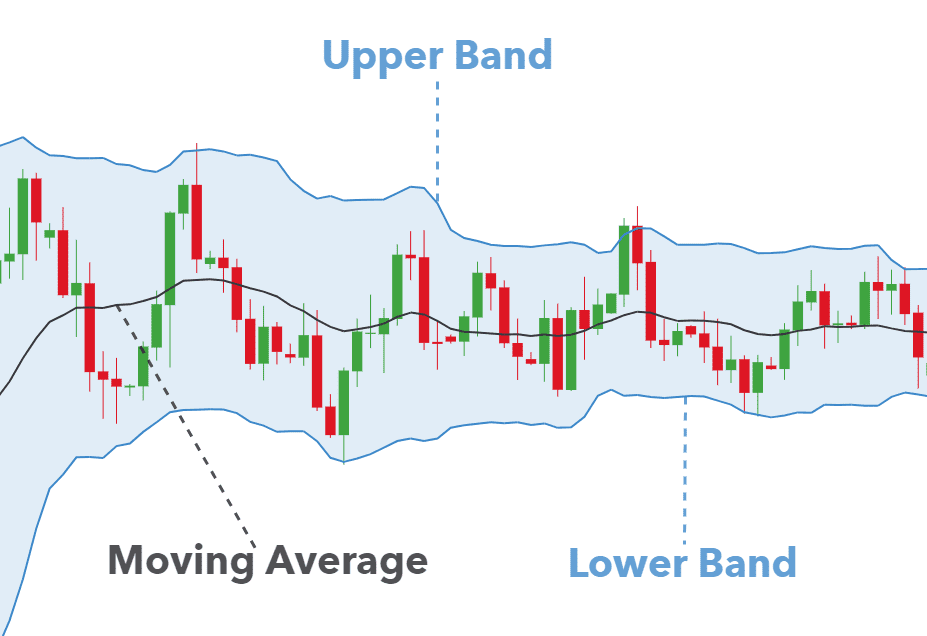Forex trading strategies for using the Bollinger Bands: Techniques for trading with Bollinger Bands.
In the dynamic world of forex trading, employing the right strategies can make all the difference between success and failure. One such tool that has gained immense popularity among traders is the Bollinger Bands. Developed by John Bollinger in the 1980s, Bollinger Bands are versatile indicators that provide valuable insights into price movements and volatility. This article delves into the techniques and strategies for effective forex trading using Bollinger Bands.

Table Content
I. Understanding Bollinger Bands
A) Middle Band (SMA)
B) Upper Band
C) Lower Band
II. Trading Strategies Using Bollinger Bands
1. The Bollinger Squeeze Strategy
2. The Bollinger Bounce Strategy
3. The Bollinger Trend-Following Strategy
4. The Bollinger Breakout Strategy
III. Risk Management and Conclusion
IV. Footnote
Understanding Bollinger Bands:
Before delving into strategies, it's essential to understand the foundation of Bollinger Bands. These bands consist of three lines on a price chart: the middle line, which is a simple moving average (SMA), and two outer bands that represent the standard deviations above and below the SMA. The width of the bands fluctuates based on market volatility – they expand during periods of high volatility and contract during periods of low volatility.

A) Middle Band (SMA): The middle line represents the average price over a specific period. A common choice is a 20-period SMA, but traders can adjust the period to suit their trading style and time frame.
B) Upper Band: This band is calculated by adding a certain number of standard deviations to the SMA. A common value is 2 standard deviations.
C) Lower Band: Similarly, the lower band is calculated by subtracting the same number of standard deviations from the SMA.
Trading Strategies Using Bollinger Bands:
1. The Bollinger Squeeze Strategy:
This strategy is suitable for identifying potential breakout points. When the Bollinger Bands contract, indicating low volatility, it suggests that a significant price movement might be on the horizon. Traders can prepare for a potential breakout by following these steps:
a. Identify the Squeeze: Watch for a period of contraction where the distance between the upper and lower bands becomes minimal.
b. Wait for Confirmation: As the squeeze continues, traders should watch for a breakout in either direction. This can be signaled by a sharp price move beyond one of the bands.
c. Confirm with Indicators: To validate the breakout, traders can use other technical indicators like the Relative Strength Index (RSI) or Moving Average Convergence Divergence (MACD).
2. The Bollinger Bounce Strategy:
This strategy focuses on price reversals from the outer bands back towards the middle band. Here's how traders can capitalize on this phenomenon:
a. Identify Overbought and Oversold Conditions: When the price touches or crosses the upper band, it could indicate an overbought condition. Similarly, when the price touches or crosses the lower band, it could indicate an oversold condition.
b. Wait for Reversal Signals: Look for reversal candlestick patterns or other reversal indicators, such as bullish or bearish divergence on the RSI, to confirm potential price reversals.
c. Execute Trades: If the reversal signals align, traders can enter trades in the direction of the anticipated reversal. For instance, if the price is overbought and shows signs of reversing, a short trade could be considered.
3. The Bollinger Trend-Following Strategy:
In this strategy, Bollinger Bands are used to confirm the strength of an ongoing trend and identify potential entry points:
a. Identify the Trend: Determine the prevailing trend using other technical tools like trendlines, moving averages, or the Average Directional Index (ADX).
b. Use Bands as Dynamic Support/Resistance: During an uptrend, the lower band often acts as dynamic support, while in a downtrend, the upper band acts as dynamic resistance.
c. Wait for Pullbacks: Look for price retracements to the middle band during an uptrend or the opposite band during a downtrend.
d. Enter Trades: Once the price retraces to the middle band and shows signs of resuming the trend (confirmed by other indicators), traders can enter trades in the direction of the trend.
4. The Bollinger Breakout Strategy:
This strategy involves trading breakouts beyond the bands to capture strong momentum moves. It's crucial to differentiate between true breakouts and false breakouts:
a. Identify Range-Bound Conditions: Look for periods when the price is consolidating and the Bollinger Bands are contracting.
b. Wait for Breakout Confirmation: When the price breaks out of the bands with substantial volume and momentum, it's a potential breakout.
c. Avoid False Breakouts: To minimize false breakout trades, wait for the price to close beyond the band rather than relying solely on intraday spikes.
d. Confirm with Volume: High trading volume during a breakout adds credibility to the move and reduces the likelihood of a false breakout.
Risk Management and Conclusion:
While Bollinger Bands offer valuable insights into price movements, it's essential to integrate sound risk management principles into your trading strategies. Here are a few key points to remember:
a. Set Stop-Loss Orders: Determine your stop-loss levels before entering trades to limit potential losses if the trade goes against you.
b. Position Sizing: Never risk more than a certain percentage of your trading capital on a single trade. This helps protect your overall account balance.
c. Diversification: Don't solely rely on Bollinger Bands. Use them in conjunction with other technical and fundamental analysis tools to make well-informed trading decisions.
Footnote
In Summary, Bollinger Bands are versatile tools that can significantly enhance your forex trading strategies. Whether you're looking for breakout opportunities, reversal signals, or trend confirmation, these bands provide a wealth of information about price movements and volatility. However, remember that no trading strategy is foolproof. Regular practice, continuous learning, and disciplined risk management are essential components of successful forex trading. So, incorporate Bollinger Bands into your arsenal, but always approach the market with caution and a well-thought-out plan.











Discussion